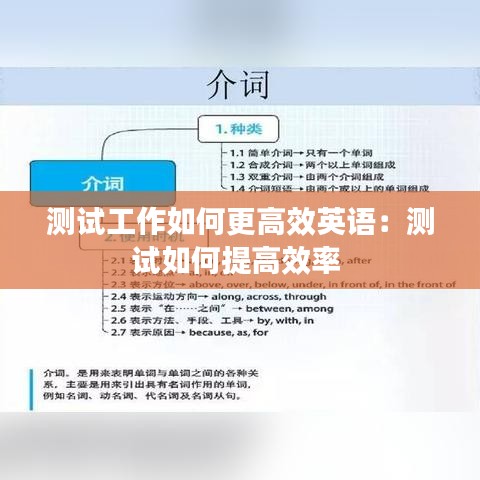Understanding the Importance of Efficient Testing
Efficient testing is a cornerstone of successful software development. It ensures that the product meets the required standards, functions correctly, and is free from bugs and errors. However, the testing process can be time-consuming and resource-intensive if not managed effectively. In this article, we will explore various strategies and best practices to enhance the efficiency of testing work in an English-speaking environment.
Optimizing Test Cases
One of the first steps to improving testing efficiency is to optimize test cases. This involves identifying the most critical functionalities and focusing on them. Test cases should be well-defined, covering all possible scenarios without being overly complex. Here are some tips for optimizing test cases:
Use a test case management tool to organize and prioritize test cases.
Collaborate with stakeholders to identify the most critical functionalities.
Keep test cases concise and clear, avoiding unnecessary details.
Regularly review and update test cases to ensure they remain relevant.
Automating Test Processes
Automation plays a crucial role in enhancing testing efficiency. By automating repetitive tasks, testers can focus on more complex and critical aspects of the testing process. Here are some automation strategies to consider:
Identify test cases that are repetitive and can be automated.
Invest in a good test automation tool that fits your project's needs.
Develop a comprehensive test automation strategy that includes both manual and automated testing.
Ensure that the automated tests are well-maintained and updated regularly.
Implementing Test Environments
A stable and well-configured test environment is essential for efficient testing. Here are some tips for setting up an effective test environment:
Ensure that the test environment closely mirrors the production environment.
Regularly update the test environment to reflect changes in the production environment.
Implement version control for test environment configurations.
Monitor the performance of the test environment to identify and resolve any issues promptly.
Collaboration and Communication
Effective collaboration and communication among team members are key to efficient testing. Here are some ways to foster better teamwork:
Hold regular meetings to discuss progress, challenges, and updates.
Encourage open communication and feedback among team members.
Use collaboration tools to facilitate communication and document sharing.
Assign clear roles and responsibilities to team members to avoid confusion.
Continuous Integration and Continuous Deployment (CI/CD)
CI/CD practices can significantly improve testing efficiency by automating the build, test, and deployment processes. Here's how to implement CI/CD in your testing workflow:
Set up a CI/CD pipeline that integrates testing into the development process.
Automate the execution of tests on every code commit.
Use a version control system to manage code changes and track progress.
Monitor the CI/CD pipeline to ensure smooth and efficient operations.
Training and Development
Investing in the training and development of your testing team can lead to improved efficiency. Here are some ways to enhance the skills of your team:
Provide regular training sessions on new testing tools and methodologies.
Encourage team members to attend industry conferences and workshops.
Offer opportunities for team members to share their knowledge and experiences.
Support continuous learning and professional growth within the team.
Conclusion
Efficient testing is crucial for delivering high-quality software products. By optimizing test cases, automating processes, implementing effective test environments, fostering collaboration, adopting CI/CD practices, and investing in training and development, you can significantly enhance the efficiency of your testing work. Remember, the key to successful testing lies in continuous
转载请注明来自潍坊寓泰防水材料有限公司 ,本文标题:《测试工作如何更高效英语:测试如何提高效率 》












 鲁ICP备2021042631号-1
鲁ICP备2021042631号-1
还没有评论,来说两句吧...